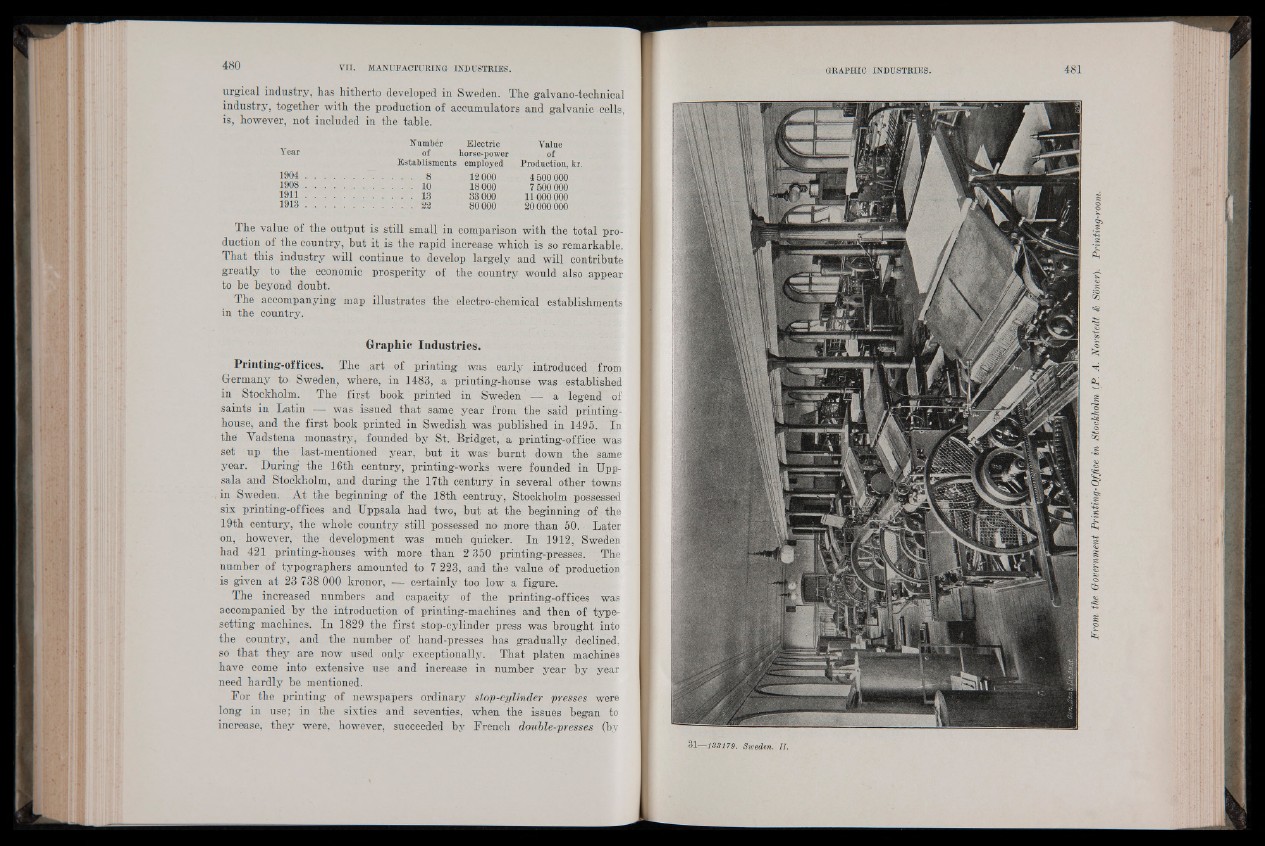
urgical industry, has hitherto developed in Sweden. The galvano-technical
industry, together with the production of accumulators and galvanic cells,
is, however, not included in the table.
Year
1904 .
1908 .
1911 .
1913 .
Number Electric Value
of bors e-power of
tablisments employed Production, kr.
8 12 000 4 500 000
18000 7 500 000
33 000 11000 000
80000 20 000 000
The value of the output is still small in comparison with the total production
of the country, but it is the rapid increase which is so remarkable.
That this industry will continue to develop largely and will contribute
greatly to the economic prosperity of the country would also appear
to be beyond doubt.
The accompanying map illustrates the electro-chemical establishments
in the country.
Graphic Industries.
Printing-offices. The art of printing was early introduced from
Germany to Sweden, where, in 1483, a printing-house was established
in Stockholm. The first book printed in Sweden •Ch1 a legend of
saints in Latin — was issued that same year from the said printing-
house, and the first book printed in Swedish was published in 1495. In
the Yadstena monastry, founded by St. Bridget,, a printing-office was
set up the last-mentioned year, but it was- burnt down the same
year. During the 16th century, printing-works were founded in Uppsala
and Stockholm, and during the 17th century in several other towns
. in Sweden. At the beginning of the 18th oentruy, Stockholm possessed
six printing-offices and Uppsala had two, but at the beginning of the
19th century, the whole country still possessed no more than 50. Later
on, however, the development was much quicker. In 1912, Sweden
had 421 printing-houses with more than 2 350 printing-presses. The
number of typographers amounted to 7 223, and the value of production
is given at 23 738 000 kronor, — certainly too low a figure.
The increased numbers and capacity of the printing-offices was
accompanied by the introduction of printing-machines and then of typesetting
machines. In 1829 the first stop-cylinder press was brought into
the country, and the number of hand-presses has gradually declined,
so that they are now used only exceptionally. That platen machines
have come into extensive use and increase in number year by year
need hardly be mentioned.
For the printing of newspapers ordinary stop-cylinder presses were
long in use; in the sixties and seventies, when the issues began to
increase, they were, however, succeeded by French double-presses (by